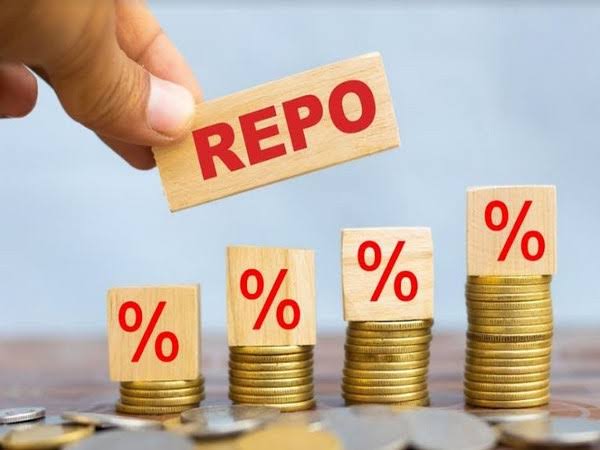
On April 9, 2025, the Reserve Bank of India (RBI) slashed the repo rate by 25 basis points, bringing it down to 6%. This second consecutive rate cut, aimed at bolstering an economy rattled by global trade tensions and U.S. tariffs, has sparked cautious optimism. While the prospect of home loan rates falling below 8% in FY 2025-26 offers hope for borrowers, the broader implications for the Indian market spanning real estate, banking, and equities reveal a nuanced picture. Here’s a fresh analysis of why immediate relief might be elusive and how this move could shape India’s financial landscape.
The Repo Rate Cut: A Lifeline With Delayed Impact
The RBI’s decision to lower the repo rate to 6% reflects a proactive stance to counter a slowing economy, now forecasted to grow at 6.5% in FY 2025-26 (down from 6.7%). This comes amid external pressures, including U.S. tariffs that threaten export-driven sectors. For homebuyers, cheaper borrowing costs sound like a boon potentially pushing home loan rates below the coveted 8% mark by mid-2026. However, the reality is more complex.
Banks, grappling with elevated funding costs and a cautious lending outlook, have historically been slow to pass on rate cuts. Anuj Puri of ANAROCK notes that “higher funding costs, pressure on net interest margins, and rising NPAs” have delayed transmission in the past. If this trend holds, borrowers might not see significant EMI relief until late 2025 or early 2026, tempering expectations of an immediate housing boom.
Real Estate: A Tale of Two Segments
The real estate sector, a key barometer of economic health, offers a split narrative. Affordable housing could see a revival if banks lower rates effectively. G Hari Babu of NAREDCO predicts “increased residential sales, better liquidity, and a gradual depletion of unsold inventory,” particularly in the sub-₹50 lakh segment. This could draw first-time buyers off the sidelines, spurred by lower EMIs and pent-up demand.
Conversely, the luxury and mid-tier segments may face headwinds. The Nifty Realty index’s 1.86% drop on April 9, with stocks like Phoenix Mills and Oberoi Realty sliding up to 4.79%, signals investor skepticism. Rising construction costs, fueled by global commodity price volatility, could offset the benefits of cheaper loans for developers. Moreover, affluent buyers—less sensitive to interest rate shifts—may hold off purchases amid economic uncertainty, keeping premium inventory stagnant.
Banking Sector: Margins Under Pressure
For banks, the repo rate cut is a double-edged sword. Lower borrowing costs from the RNI could boost loan demand, particularly for home and auto loans. However, the squeeze on net interest margins (NIMs) the difference between what banks earn on loans and pay on deposits poses a challenge. If banks pass on the full 25-basis-point cut, their profitability could take a hit, especially for public sector giants like SBI, already burdened by NPAs.
Private lenders like HDFC Bank, with stronger balance sheets, might fare better by quickly adjusting lending rates to capture market share. Yet, the stock market’s tepid response—evident in the Nifty Realty decline—suggests investors are wary of short-term earnings pressure over long-term loan growth.
Equity Markets: Volatility Over Optimism
The Indian equity market’s reaction to the rate cut will likely be shaped by global cues as much as domestic policy. Lower interest rates typically fuel bullish sentiment by reducing the cost of capital for businesses. Sectors like consumer durables, automobiles, and infrastructure could see gains as borrowing becomes cheaper, potentially lifting indices like the Nifty 50.
However, the shadow of U.S. tariffs and a weakening rupee (nearing 85 to the dollar) could cap upside potential. Foreign institutional investors (FIIs), jittery about emerging market risks, might pull back, triggering volatility. The Sensex and Nifty, already sensitive to global trade rhetoric, may oscillate until clarity emerges on tariff impacts. A unique angle here is the interplay with India’s IT sector: while cheaper loans could spur domestic investment, a stronger dollar might paradoxically boost IT export revenues, creating a rare bright spot amid uncertainty.
Inflation and Currency: The Wild Cards
The RBI’s rate cut assumes inflation will remain manageable, projected at 4.2% for FY 2025-26. Yet, global uncertainties rising energy prices or supply chain disruptions could reignite inflationary pressures, forcing the RBI to pause or reverse course. A weaker rupee, driven by tariff-induced export declines, might exacerbate imported inflation, eroding the purchasing power of homebuyers and investors alike.
This currency dynamic adds a layer of unpredictability to the market. While a depreciating rupee benefits exporters, it could deter FII inflows, pressuring equity valuations. The RBI may need to intervene via forex reserves, further complicating monetary policy transmission.
Unique Impact on Indian Markets: The Rural-Urban Divide
One overlooked aspect is how this rate cut might widen the rural-urban economic divide. Urban-centric real estate and banking sectors stand to gain from lower rates, but rural borrowers reliant on informal credit may see little relief. Agricultural distress, worsened by global trade shifts, could dampen rural consumption, a key driver of India’s GDP. This disparity might slow the broader economic recovery, even as urban housing demand picks up.
Conclusion: A Gradual Ripple, Not a Wave
Home loan rates dipping below 8% in FY 2025-26 is a tantalizing prospect, but the Indian market’s response will be neither swift nor uniform. Real estate may see a staggered recovery, with affordable housing outpacing luxury. Banks face a profitability tightrope, while equities grapple with global headwinds. The RBI’s move is a calculated nudge toward growth, but its success hinges on bank transmission, inflation trends, and external stability.
For investors and homebuyers, the watchword is patience. The market may reward those who time their moves buying property or stocks once the dust settles on this rate cut’s ripple effects. Until then, India’s financial ecosystem braces for a slow burn rather than a sudden surge.




